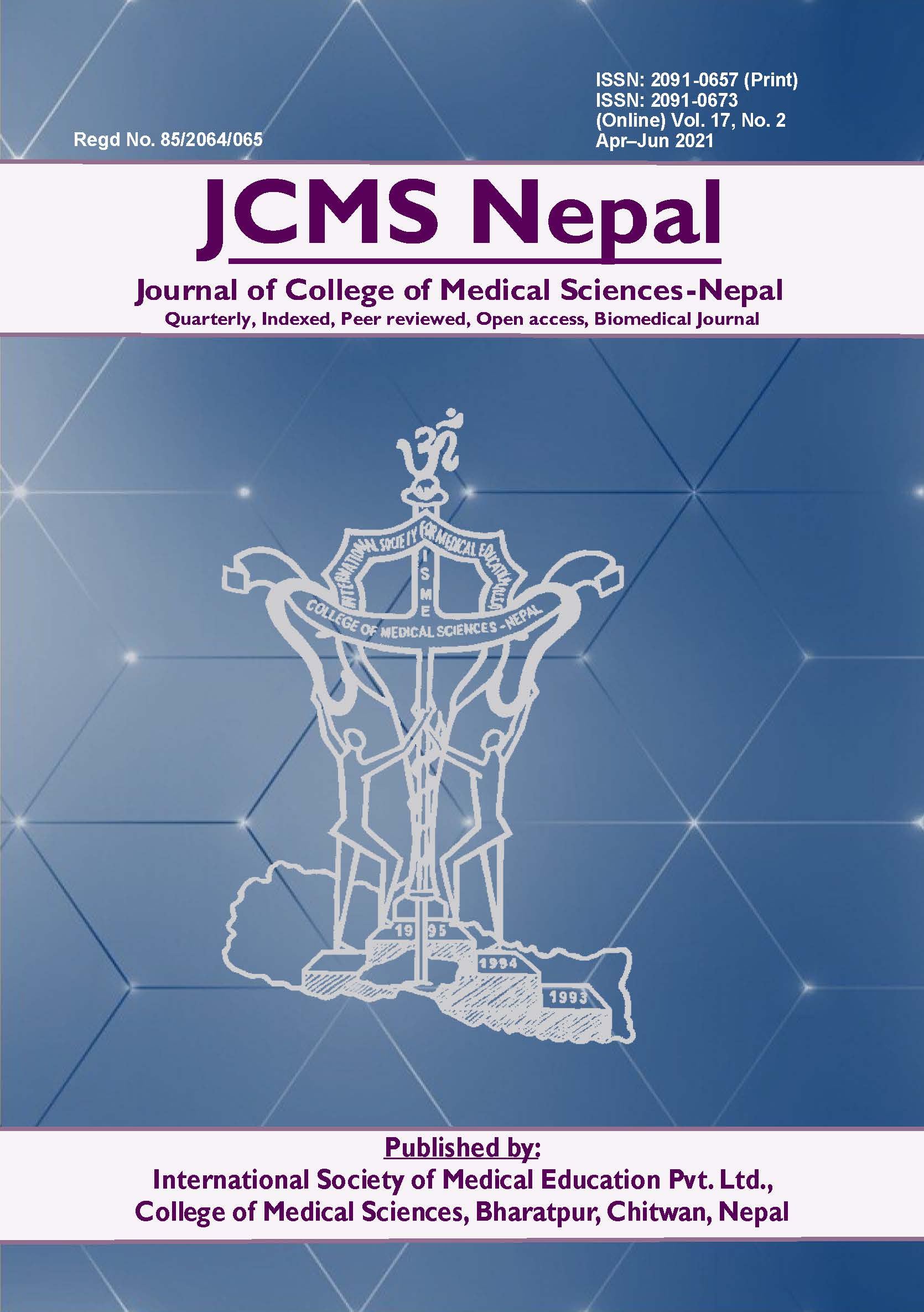Histomorphological Spectrum of Lesions in Nephrectomy Specimen
DOI:
https://doi.org/10.3126/jcmsn.v17i2.36322Keywords:
chronic pyelonephritis; nephrectomy; clear cell renal cell carcinoma.Abstract
Background
Nephrectomy is a common and standard surgical practice in urology. It has pivotal role in diagnosis, treatment and prognosis of disease. It is indicated in patients with irreversible kidney damage following chronic infection, trauma, obstruction and malformation as well as renal malignancy. The objective of this study was to analyze the histomorphological spectrum of various lesions in nephrectomy specimens with special emphasis on grading and staging of renal carcinoma.
Methods
This is a retrospective study done from January 2015 to December 2020 in the Department of Pathology, Dhulikhel Hospital - Kathmandu University Hospital (DH - KUH). Relevant clinical data of the patients were obtained from the histopathological records of the patient from the pathology department.
Results
A total of 70 cases were studied, out of which 60 were simple nephrectomy specimens, followed by 8 radical and 2 partial nephrectomy specimens. The age of patient ranged from 2 to 74 years. Highest percentage of nephrectomy was seen in 4th decade of life. Male population comprising 54.28% of nephrectomy. Non-neoplastic lesions constituted 53 cases and chronic pyelonephritis was the most common lesion. Out of 17 neoplastic lesions, 76.47% of cases were malignant. Clear cell renal cell carcinoma was the most common malignant tumour.
Conclusions
This study gives a fair insight into the incidence of neoplastic and non-neoplastic lesions of kidney requiring nephrectomy in this institution.
Downloads
Downloads
Published
How to Cite
Issue
Section
License
Copyright (c) 2021 Dipika Basnet, Ramesh Makaju, Rachana Dhakal, Binita Lama, Nikita Gautam

This work is licensed under a Creative Commons Attribution-NonCommercial-NoDerivatives 4.0 International License.
This license enables reusers to copy and distribute the material in any medium or format in unadapted form only, for noncommercial purposes only, and only so long as attribution is given to the creator.




